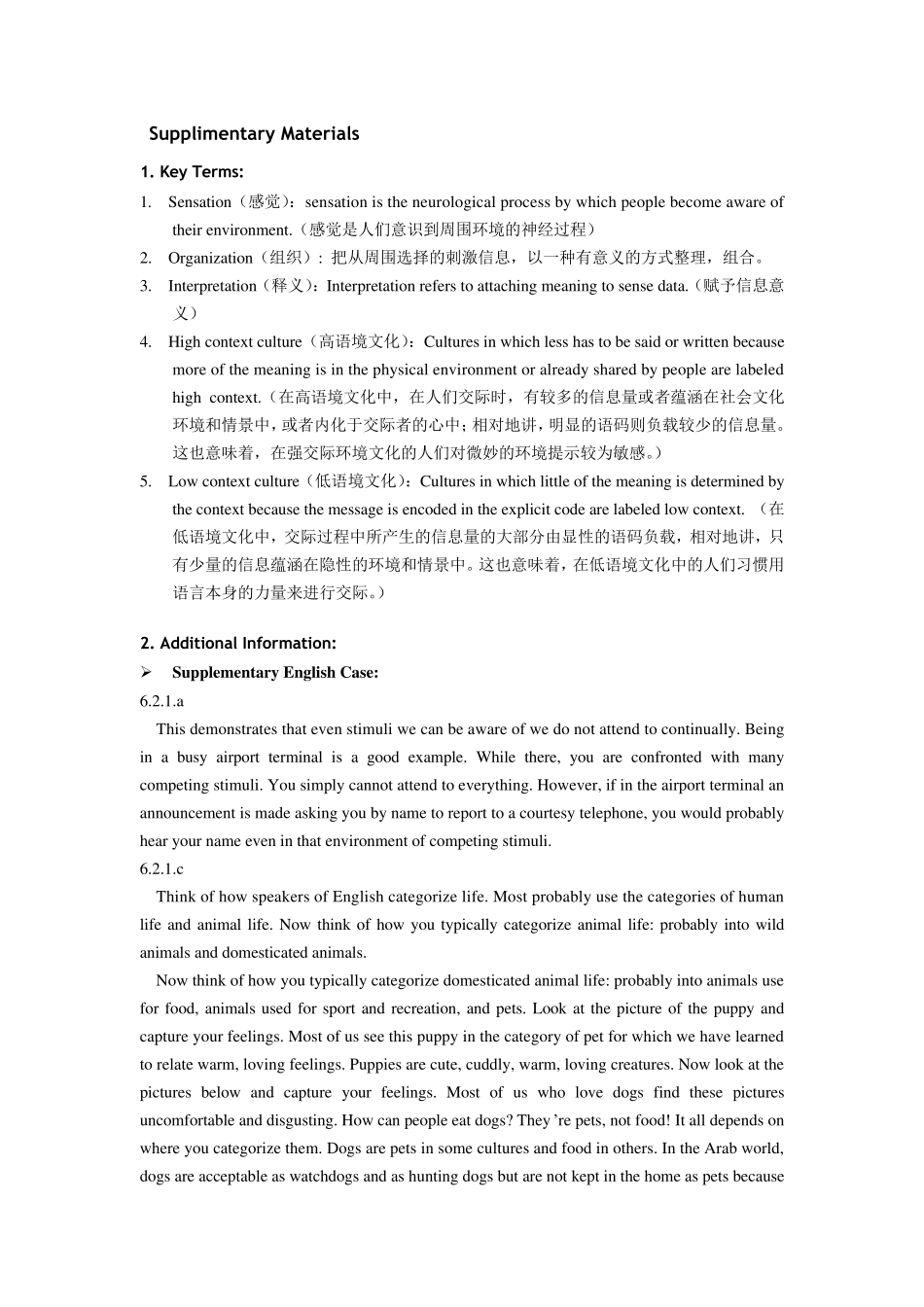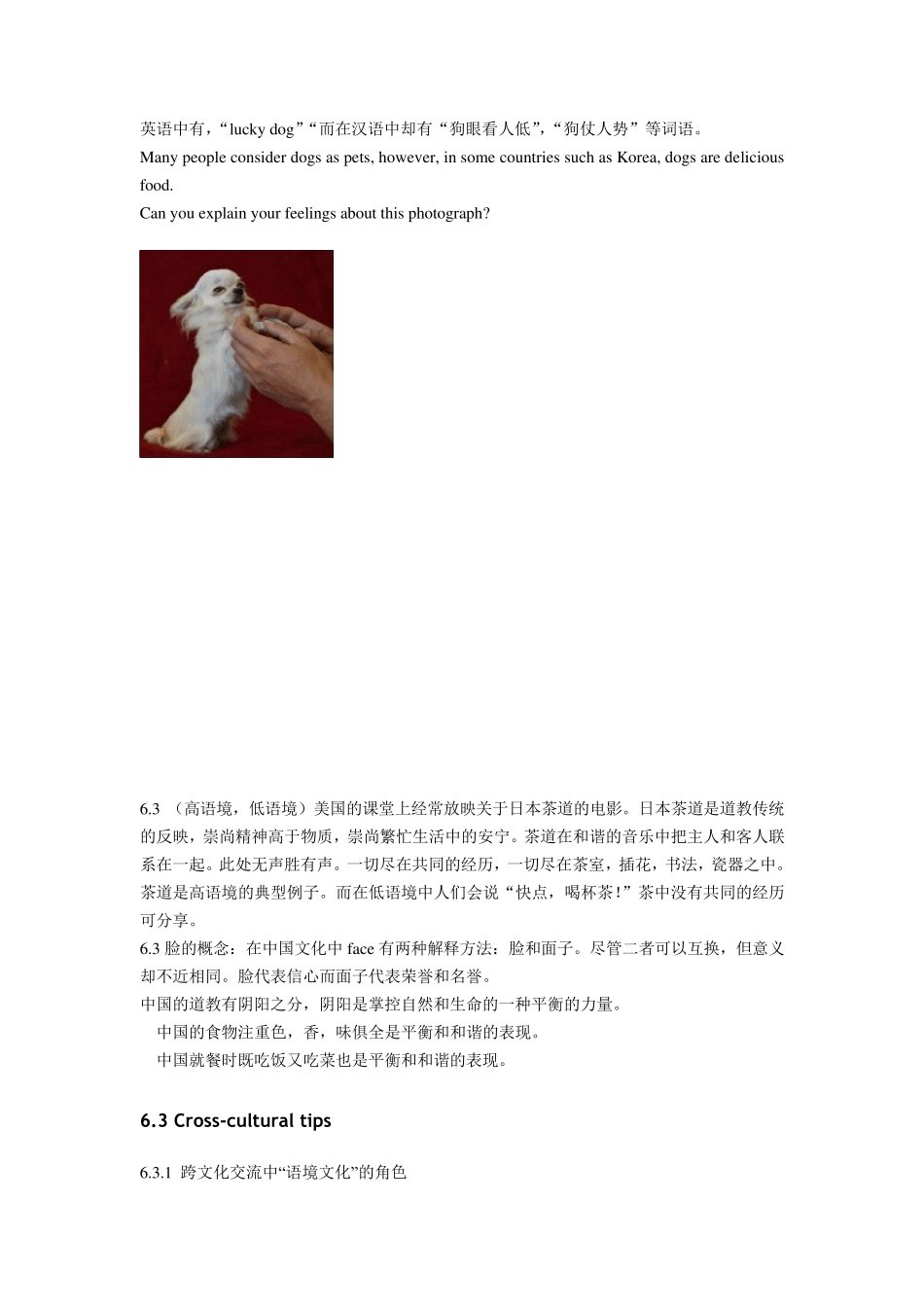Supplimentary Materials 1. Key Terms: 1. Sensation(感觉):sensation is the neurological process by which people become aware of their environment.(感觉是人们意识到周围环境的神经过程) 2. Organization(组织): 把从周围选择的刺激信息,以一种有意义的方式整理,组合。 3. Interpretation(释义):Interpretation refers to attaching meaning to sense data.(赋予信息意义) 4. High context culture(高语境文化):Cultures in which less has to be said or written because more of the meaning is in the physical environment or already shared by people are labeled high context.(在高语境文化中,在人们交际时,有较多的信息量或者蕴涵在社会文化环境和情景中,或者内化于交际者的心中;相对地讲,明显的语码则负载较少的信息量。这也意味着,在强交际环境文化的人们对微妙的环境提示较为敏感。) 5. Low context culture(低语境文化):Cultures in which little of the meaning is determined by the context because the message is encoded in the explicit code are labeled low context. (在低语境文化中,交际过程中所产生的信息量的大部分由显性的语码负载,相对地讲,只有少量的信息蕴涵在隐性的环境和情景中。这也意味着,在低语境文化中的人们习惯用语言本身的力量来进行交际。) 2. Additional Information: ➢ Supplementary English Case: 6.2.1.a This demonstrates that even stimuli we can be aware of we do not attend to continually. Being in a busy airport terminal is a good example. While there, you are confronted with many competing stimuli. You simply cannot attend to everything. However, if in the airport terminal an announcement is made asking you by name to report to a courtesy telephone, you would probably hear your name even in that environment of competing stimuli. 6.2.1.c Think of how speakers of English categorize life. Most probably use the categories of human life and animal life. Now think of how you typically ...


